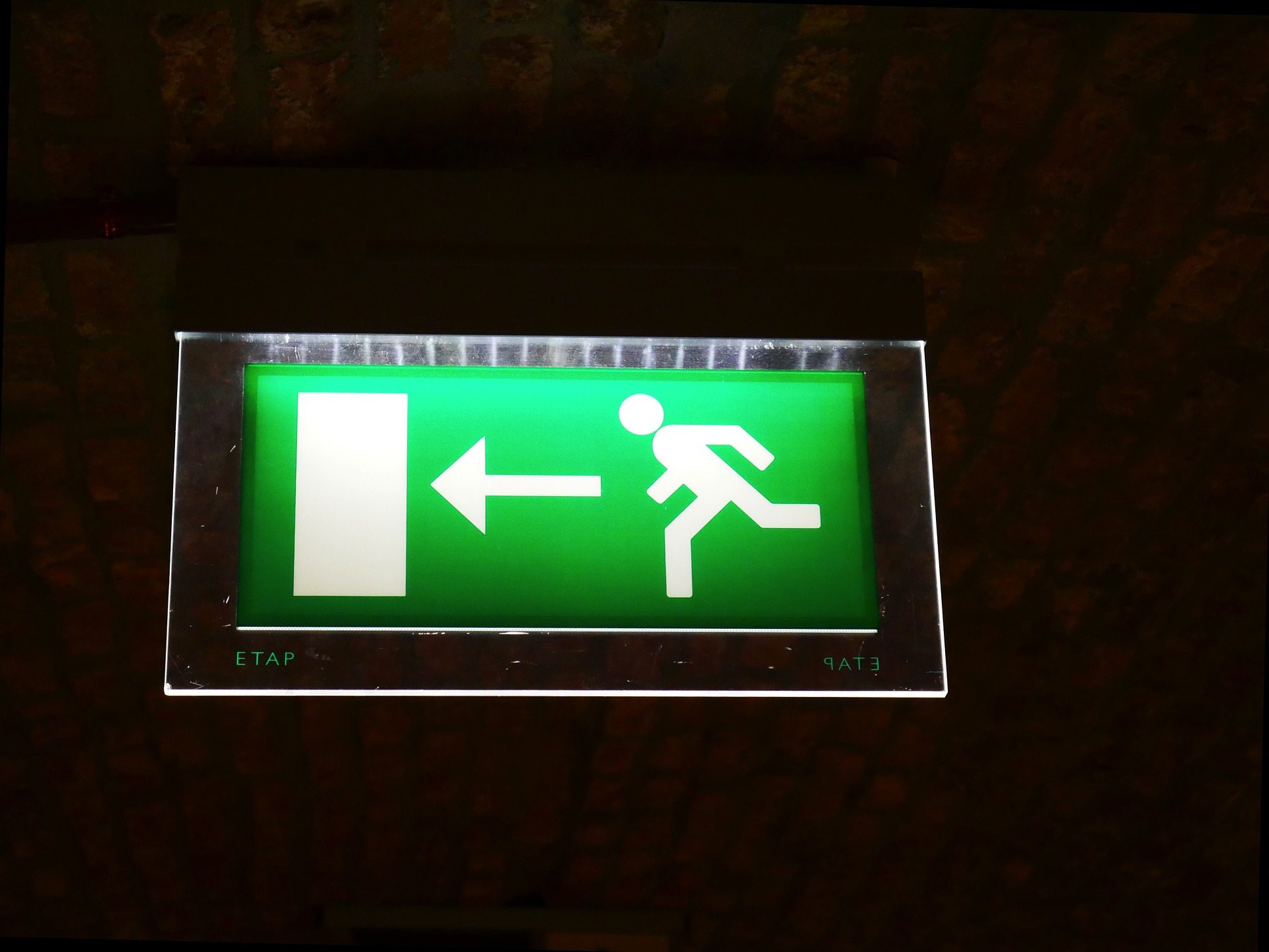 [Marriage Missions Editors Note: We’re aware that we have people from all over the world that read articles on our web site. For this reason some of the advice given may not apply to some of you, because you don’t have the same types of resources available to you where you live. But to the best of your ability, apply whatever you can as far as putting together a safety plan. This is so that you can make yourself as safe as possible. It is our prayer that you will find ways to protect yourself. God loves you and cares for you and so do we.]
[Marriage Missions Editors Note: We’re aware that we have people from all over the world that read articles on our web site. For this reason some of the advice given may not apply to some of you, because you don’t have the same types of resources available to you where you live. But to the best of your ability, apply whatever you can as far as putting together a safety plan. This is so that you can make yourself as safe as possible. It is our prayer that you will find ways to protect yourself. God loves you and cares for you and so do we.]
Although you do not have control over your partner’s abusive behavior, you do have a choice about how to respond to that behavior, and how to best get yourself and your children to safety. That is why putting together a safety plan can be a smart thing to do.
PERSONAL SAFETY PLAN
Before an attack:
1. Educate yourself. Learn about organizations and services that can help you, both in your area and nationally. Make a list of places you can call in an emergency (police, shelters, friends, family, church, YWCA, Salvation Army, support groups, domestic violence coalitions, etc.) Find out what services are available in your community, and what their limitations are. Will they pick you up in the middle of the night? Will they allow you to bring your pets? How long can you stay? Do they provide or refer you to counseling services, legal assistance, or help you get a job and permanent housing?
2. If you have to travel to another town to reach a shelter or safe housing, find out how to get there ahead of time.Know which motel you could go to and how to get there. Choose some alternatives in case that motel is full. Determine ahead of time where you can park your car so that it will be out of sight from the road.
3. Pack a bag with emergency supplies such as a change of clothing, toothbrush and other necessities, non-perishable food, special blanket or toys for the children, cash, checkbook, ATM card, credit cards, phone numbers of friends or agencies who can help, copies of important documents (personal identification, birth certificates, social security cards, school and medical records, passport, deeds to house, title to car, insurance papers, investment documentation, tax returns), extra keys to car and home, etc.
Leave the bag at the home of a trusted friend or relative. If necessary, you could rent a locker at a bus station or airport.
Also:
4. Think about how you would get out of the house safely, and practice it to see how long it takes and whether or not you will have difficulty getting out that way. Consider using doors, windows, elevators, stairwells, or fire escapes, but make sure you can exit safely without being trapped or injured.
5. Tell neighbors, friends, and family members what is going on.Request they call the police if they hear suspicious noises coming from your house. Work out a signal (window shade down on a certain window, or blinking light) so the neighbor will know they should call the police.
6. Consider writing a letter to someone you trust explaining how you have been abused, the name of the abuser, when incidents have occurred, and any other important details. Sign it and mail it. It may be used as evidence later.
7. Teach your children how to dial 9-1-1, and instruct them to call whenever they hear or see violence in the home. Work it out with trusted neighbors for the children to leave home at the first sign of violence and seek shelter with them. The neighbors can then call the police.
8. Develop a code word to say to your children or friends when you need them to call or run for help.
9. Keep a list of telephone numbers in your wallet of people who will help you. If a friend or family member has offered you emergency shelter, ask if you can have a key to their home to keep in your wallet, or let you know the location of a key hidden on their property.
10. Make an extra copy of the house key and car keys, and keep them in your wallet or emergency bag.
Plus, in Your Safety Plan:
11. Gather up sentimental possessions such as photographs, children’s drawings, jewelry, etc. If photographs or video tapes can be easily copied, make a plan to copy everything of value to you and get it out of the house. A vengeful abuser delights in destroying his partner’s property or withholding sentimental items to hurt her.
12. Familiarize yourself with your monthly household expenses. List what you spend for groceries, rent, insurance, utilities, child care, transportation, medical care, etc. This will help you determine how much you will need to earn when you are on your own. You will also need this information for filling out forms for restraining orders, public assistance programs, etc.
13. Begin saving money a little at a time out of the grocery budget, from garage sales, or from any other source you can find. Keep enough money on you at all times to pay for taxi or bus fare, and one or more nights at a hotel. Get a credit card in your own name and use the address of your workplace or a trusted friend. Open up a savings account in your name and deposit as much as you can each week.
14. If possible, join a support group for battered women.If your abuser doesn’t ask where you are going, don’t volunteer the information. However, if he asks, don’t lie, but be cautious in offering specific information about the group.
15. Make a list of advantages and disadvantages of leaving. Be realistic about both situations, and evaluate your options frequently. What may be a good option today may not work well tomorrow. Don’t act impulsively on such an important decision. Take time to carefully strategize and evaluate your next move.
Additionally:
16. Research information about apartments. Know where you can rent an apartment in a safe neighborhood for the lowest price, how much is required for a security deposit, whether or not they allow children and pets, whether they have a security system so it would be difficult for your spouse to get into the building, etc. Save enough money for the security deposit and two to three months of rent (if possible).
17. Make a habit of backing your car into the drivewayso you can leave quickly.If there is a chance your car can be blocked in, park on the street. Always make sure the passenger and back seat doors are locked when you get into the car. Make sure the car always has a full tank of gas.
18. Remove all knives or other sharp objects from view. If you have a knife holder or rack, either put it in a hard to reach place or remove the knives or put them in a safe place.
19. If there are guns in the house, learn how to unload them. If you anticipate violence, either lock up the ammunition or get the guns and ammunition completely out of the house.
20. If you are sleeping in separate bedrooms, lock and barricade the door so you won’t be attacked while you are sleeping. Do not stay in a room where you cannot escape from a window or another entrance in case of an emergency.
Finally:
21. Plan ahead of time where you will go during an argument or at the first sign of violence. Try to move to a room where you will not be trapped. Avoid the bathroom, garage, basement, or rooms without access to a window or outside door.
22. Consider taking a self-defense course which will increase your self-confidence and emotional strength. Do not count on this training to make you safe. Many women can be easily overpowered by an angry man, and they can be more seriously hurt or killed by trying to fight back.
During and following an attack:
1. Try to diffuse the abuser’s anger by staying as calm as possible. Be careful about hitting back or picking up objects to use as weapons. The abuser can grab them and use them on you.
2. Promise the abuser whatever he wants to get him to calm down. Do not argue or defend yourself verbally.
3. Try to position yourself as far away from the children as possible to protect them from the abuser. If possible, say the code word so the children will know to get out of the house and/or call 9-1-1.
4. If you have devised a signal system with a neighbor, work your way to the part of the house where the signal can be activated.
5. If the abuser is distracted, grab your children, purse, and keys and get out of the house. Get into the car and drive away as quickly as possible. If you don’t have a car, walk or run to the nearest place of safety or public place such as a restaurant, business, or home of a neighbor and call the police.
Also:
6. If you have to leave the house without the children, or if he locks you out, arrange to go back for them as soon as possible. Do not go alone! Ask a police officer to accompany you or pick them up at school.
7. If you are injured and need medical attention, wait until the abuser is asleep or distracted and call 9-1-1. If the bathroom has a window large enough to escape through, suggest that you are going to get some bandages. Lock the door, climb out the window, and drive or run to safety.
8. If you are unable to escape immediately, wait until the abuser is asleep or make an excuse to check on the children. Grab the children and go out the window or a back door before the abuser realizes what is happening.
9. If you see the abuser with a weapon in his hand, do not take time to call 9-1-1 or confront him. Leave immediately!
10. If you have a cellular phone in your purse, make your way to a room with a door that can be locked. If you are unable to escape out the window, barricade the door, quietly call 9-1-1, put the phone back into your purse, and wait for the police to arrive.
After you leave (or he leaves):
1. If he leaves the home, change the locks on all outer doors and windows immediately.
2. Replace wooden doors with steel doors that cannot be easily kicked in.
3. Install window locks, bars in sliding glass doors, electronic safety system (if possible).
4. Purchase rope ladders to escape from second floor windows.
5. Install an outside lighting system that lights up when someone comes close to the house.
6. If you leave, find an apartment that has security entrances and deadbolt locks on the inner doors.
7. Alert your new neighbors not to let the abuser in the building for any reason. Ask them to call the police if they see him in the building.
8. Do not, for any reason, allow the abuser to visit the children in your apartment. Arrange to meet him at a public place, or if your children are older arrange for them to meet him in the parking lot or driveway.
Plus, Concerning Your Safety Plan:
9. Fill out a change of address card for yourself and your children. If you have custody of the children, check with the post office occasionally to make sure the abuser has not changed the children’s address back to his address. Get to know your mail carrier, and alert them to potential problems.
10. If there are no children involved, get an unlisted phone number. Make sure everyone who knows your number also knows not to give it to him. If possible, install Caller ID on your phone system.
11. Don’t open the door unless you can identify the one who knocks. Require all service people to show their identification before you unlock the door.
12. If a suspicious box or package shows up that you did not order, do not move it. Call the police.
13. Use an automatic timer for your lights and use it regularly. Leave a radio or TV on when you leave.
14. Obtain an order of protection and keep it with you at all times.
15. Teach your children how to call you collect in case they are “kidnapped” by the other parent.
16. If phone calls from your husband become abusive, hang up. If he calls back and continues the abuse, hang up again.
Safety in the car:
1. Park in well-lit areas. Do not get out of the car if you sense someone approaching. Be observant and do not exit the car until you have door keys in hand and surroundings look safe.
2. Install a locking gas cap which can be unlocked from inside the car.
3. Never get into your car without looking inside first. If you see suspicious wire inside or outside your car, or signs that your car has been tampered with, call the police immediately. Do not get inside or try to start the engine.
4. Keep all doors locked while you are driving.
5. If you sense that you are being followed, drive to the nearest police or fire station. Honk the horn to attract attention. If you are not near a police or fire station, go to a heavily populated area such as a restaurant or gas station. Ask someone to call the police.
6. Get a cellular phone which you can carry in your purse when you are not in the car. Purchase an adapter which will allow you to plug the phone into the cigarette lighter in case your phone battery runs low.
Please Know:
7. If you feel unsafe walking to your car alone, ask someone to escort you. This is especially important if you have parked in a parking garage or other place where you may be walking to the car alone.
8. Ask someone to escort you to and from joint counseling sessions and legal proceedings.
9. If you are approached by the abuser in public, and you feel threatened, scream “help.” Go quickly to wherever people are congregated.
10. If your abuser gets into the vehicle with you, take the keys out of the ignition. Then try to get out of the car. If he tries to prevent you from taking the keys out of the ignition and makes it impossible for you to get out of the car, hold onto the keys as tightly as possible with one hand. Sound the horn with the other. If you can get the window down, scream “help” and continue to honk the horn. And if the abuser tries to drag you out of the car, wrap your arms tightly around the steering wheel and hold on. Your chances of being injured or killed are greater if he is able to get you outside the car.
11. If your abuser stands in front of your vehicle and blocks you from leaving, remain in the vehicle with the doors locked and windows up. If you have a cellular phone, call 9-1-1. But if you don’t have one, honk the horn to attract attention. Be careful about trying to maneuver the car backwards or around the abuser. You may hit him and be arrested yourself!
Safety at work:
1. Alert your boss, co-workers, and receptionist about your situation. Make sure they know not to give out your home phone number or any personal information to any caller. Your husband may have someone else to call on his behalf.
2. Do not accept or open packages which you did not order or recognize.
3. Ask to park in a secured area, if possible. Leave the building with others or ask for someone to escort you to your car.
4. If there is a security guard on duty, make sure he is aware of your situation.
5. Make copies of your abuser’s photograph available to the receptionist and security guard, and ask them not to send any unauthorized person to your work area.
6. Make a plan of escape should your abuser enter your workplace undetected.
7. Ask a co-worker or your supervisor to call you or a family member if you do not show up at work by a certain time without prior notice.
Personal Safety Plan:
1. If you do not have children (which obligates you to advise the abuser of your address), rent a post office box and remove your home address from personal checks, business cards, and mailing lists. File a change of address card with the post office to have all mail sent to your post office box. Ask all friends, business associates, creditors, and publications to remove your old address from their files.
2. Ask credit agencies to remove your old address from your credit history. Get a driver’s license with your new address, and do the same with other identification, credit, and membership cards.
3. Register to vote with a private mailing address or file for confidential voter status.
4. Get an unlisted telephone number with Caller I.D.
5. Notify your local police department about your situation, and ask for periodic drive-bys.
6. Carefully document all harassing phone calls and encounters. Keep copies of notes and mail. If the abuser shows up at your residence uninvited, call the police immediately.
Safety Plan Checklist of Things to Take:
• Identification for yourself and the children
• Birth certificates
• Marriage certificate
• Social Security cards (yours and children’s—write down his number)
• School and health records
• Money (In community property states, you can legally take 1/2 of the funds in a joint checking and savings account. If you do not take money from these accounts, he can close the accounts, take all the money, and you may not ever get your share.
• Checkbook and ATM card
• Credit cards (those held jointly and separately)
• Copies of unpaid bills, receipts, credit card statements, etc.
• Keys to car, house, lock box, storage building, etc.
• Registration and title to car(s), his license plate number and car info
• Medication
• Passport, Will, recent photographs of abuser
• Medical records
• Deed to house and other real estate
• Mortgage papers
• Loan agreements
• Bank books (joint and personal accounts, children’s accounts)
• Insurance policies
• Address book
• Pictures, video tapes, CDs, music, sentimental mementos
• Children’s favorite toys and blankets
• Tax returns for the past 3 years, cancelled checks and bank statements for past 5 years
• Pay stubs (yours and his)
• Journals or diary
• Documentation of criminal activity, copies of police reports
• Copies of financial documents and portfolios, credit union accounts,
• 401K plan. Profit-sharing, and pension information
Safety Plan Checklist of Things to Take:
1. If I decide to leave, I will get out of the house by _________________.
2. I will keep my purse and car keys _________________ so I can get to them quickly when I have to leave.
3. I will tell _____________ about the violence, and ask them to call the police if they hear anything suspicious coming from my house.
4. I will use _______ as a code word for my children or friends to call 9-1-1 immediately.
5. If I have to leave my home, I will go to ________________________.
6. If I cannot go there, I will go to ________________________.
7. When an argument begins, I will go to ___________, a room where I can safely exit.
8. I will leave money, an extra set of car and house keys, a change of clothing, and important papers with _____________.
Additionally:
9. I will open a savings account by _________ and begin saving something each month.
10. ________________ will let me stay with them on an emergency basis.
11. I can leave extra clothes with ________________________.
12. Also, I will tell ___________ at school, ___________ at church, _____________ at the daycare center which people have permission to pick up my children, and that my spouse, or ex-spouse is not permitted to do so (if I have sole custody).
13. I will inform ______________ (friend), ______________ (neighbors), and ___________________ (pastor) that my husband no longer lives with me.
14. I will inform ___________________(at work) not to accept calls or answer personal questions from my husband, and not to allow him to visit my workplace.
15. The phone number for the closest shelter is ___________________.
16. Other phone numbers are ____________ (pastor), ___________ (supervisor), ____________ (friend) ____________ (other).
This Safety Plan article comes from the great web site for the ministry of FOCUS Ministries, Inc. focusministries1.org. FOCUS Ministries is a not-for-profit organization devoted to offer hope, encouragement, education, and assistance to women who are struggling in difficult circumstances, including spousal abuse.
If you are suffering from abuse from your spouse we urge you to do all you can to protect yourself. We also encourage you to visit their web site to see what help you can receive there.
More from Marriage Missions
Filed under: Abuse in Marriage






